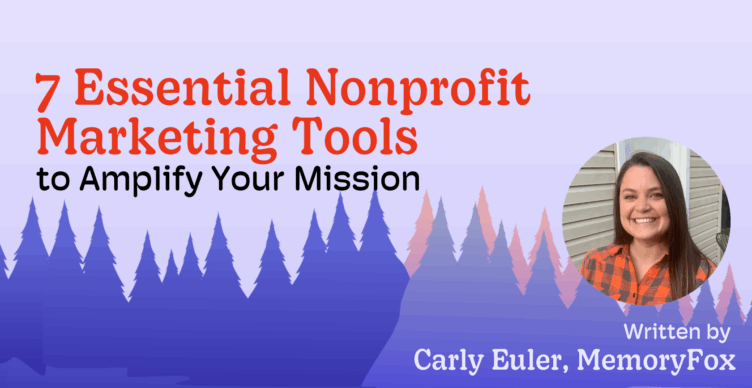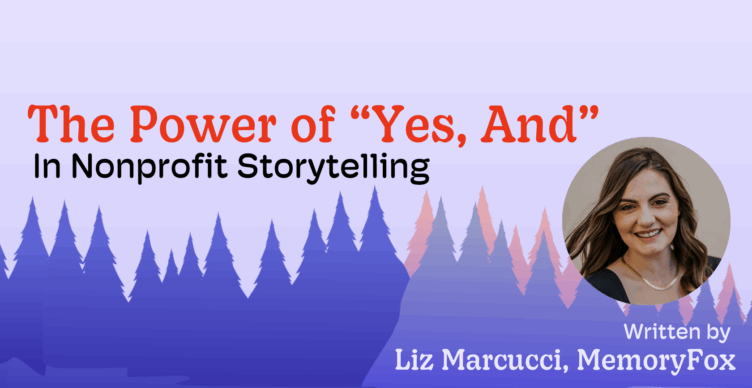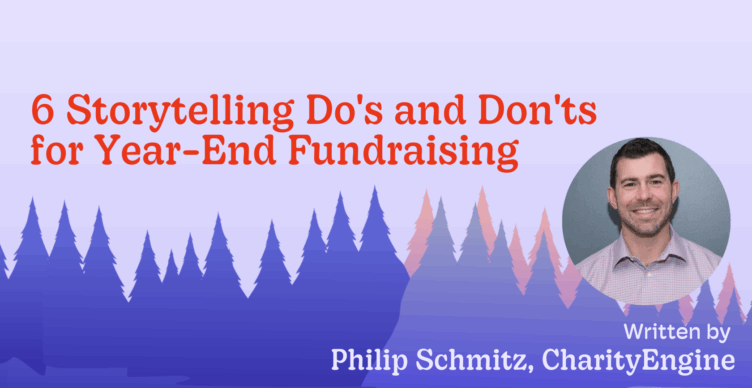Community Building, Storytelling Strategy
Using Storytelling to Boost Event Marketing & Engagement
In a world saturated with information and competing messages, storytelling is a powerful tool nonprofits can use to cut through the noise, especially when promoting nonprofit events. A compelling, human-focused story shares event details and connects with potential attendees emotionally.
Strategic storytelling can drive attendance, increase engagement, and deepen relationships with supporters throughout your event’s rollout. To achieve the best results, you must tell the right story in an ethical and impactful way. In this article, we’ll explore how your nonprofit can use storytelling across your event marketing strategy to inspire participation, build trust, and create meaningful moments that resonate.
Why Storytelling Matters in Nonprofit Event Marketing
Storytelling isn’t just a creative tool; it’s a strategic one. In fact, according to Fifty & Fifty, your story is your most important message to share. When your nonprofit uses storytelling in event marketing, you turn abstract causes into real human experiences that attendees can connect with on a personal level. Here are some reasons why every nonprofit should integrate storytelling into its event marketing:
- Stories hold emotional significance. Stories create emotional connections that facts and figures alone rarely achieve. When your audience sees the impact of your mission through the eyes of someone you’ve helped or a volunteer who made a difference, they are more likely to feel inspired, moved, and motivated to get involved.
- Storytelling builds trust and credibility. At a time when people are increasingly cautious about where they donate or spend their time, storytelling offers authenticity. Sharing real stories from your community reinforces the integrity of your work and helps supporters understand the “why” behind your mission, not just the “what.”
- Storytelling inspires action. Supporters want to attend events that really matter. By using storytelling in your marketing, you give your audience a reason to register, donate, share, and participate.
Types of Stories That Resonate with Event Audiences
Not all stories are equally effective. The most impactful stories for nonprofit events help attendees understand your cause through real experiences, allowing them to see the human side of your work. These story types consistently connect with event audiences:
- Mission-driven impact stories. These stories showcase the tangible results of your organization’s work. They might highlight an individual or community that benefited from your programs, illustrating how contributions and programs led to real change.
- Volunteer and donor spotlights. Highlight the people who help make your work possible. Sharing why a volunteer dedicates their time or what motivates a donor to support your cause can inspire others to get involved. Plus, these stories foster a sense of community and show that every contribution matters.
- Beneficiary testimonials. Firsthand stories from beneficiaries are powerful. They create empathy and show how support makes an impact (when shared respectfully).
- Behind-the-scenes narratives. These stories create transparency and help attendees feel more connected to your organization and its work. Introduce the staff, share challenges you’ve overcome, and reveal the event planning process.
Each of these story types serves a unique purpose. A strong event campaign often includes a mix of them to engage supporters in different ways.
Where to Use Storytelling in Your Event Marketing Strategy
Storytelling works best when it’s integrated across your entire event marketing plan. By weaving stories into every stage of your outreach, you create a consistent, emotionally engaging experience that builds momentum and drives participation. Be sure to include stories on the following communication channels:
- On your event landing page. Instead of leading with just logistics, start your landing page with a short, compelling story that illustrates the purpose behind the event. This helps visitors connect emotionally before they even scroll to the details.
- In your email campaigns. Use email to tell a series of stories over time. Alternate emails featuring beneficiaries, volunteers, or donors to build event excitement and deepen connection.
- On social media. Social platforms are ideal for short-form storytelling. Share bite-sized narratives through image captions, carousels, video clips, or quotes. Use Instagram, Facebook, and more to show behind-the-scenes moments or quick testimonials that feel organic and off-the-cuff.
- During the event. Feature short videos, live speakers, or printed materials that highlight individual journeys tied to your mission. Stories shared during the event can inspire deeper connections, encourage donations, and make the experience more memorable for attendees.
- In post-event follow-up. Send follow-up emails or social posts that show what was achieved through the event, framed through the lens of those affected. This allows you to thank attendees and build long-term trust.
When used thoughtfully across multiple channels, storytelling turns a one-time event into an ongoing narrative your supporters want to follow.
Ethical Storytelling Practices for Nonprofits
Storytelling affects real people and, as a result, comes with significant responsibility. Nonprofits must ensure that they represent people and communities accurately, respectfully, and with their full consent.
- Obtain informed consent. Make sure the story’s subject understands how their story will be used, where it will appear, and who will see it. If someone hesitates or expresses discomfort, respect their decision. Use aliases or keep stories anonymous when needed.
- Avoid exploitation and stereotypes. Stories should never rely on shock value, pity, or exaggerated hardship to generate support. Avoid content that objectifies or dehumanizes the subject.
- Actively involve the story subjects. Whenever possible, involve individuals in how their story is told. Allow them to review quotes or choose how they’re represented.
By following ethical storytelling practices, your nonprofit will protect the people it serves and build deeper, more authentic relationships with its audience.
Wrapping Up
When you share genuine stories in your event marketing, you help supporters see the real impact of your work and help beneficiaries get more involved in your messaging efforts. Make storytelling a cornerstone of your next campaign, and watch engagement grow before, during, and long after your event ends.

About the Author
Daria Knupp, CEM
Senior Content Marketing Manager, A2Z Events by Personify
Daria Knupp, CEM, is the Senior Content Marketing Manager at A2Z Events by Personify. She has spent most of her career in the association world handling content creation and digital marketing and recently decided to apply her expertise to the events industry.




